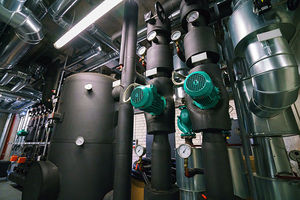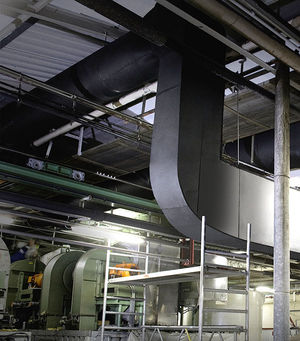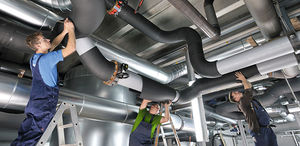 Building owners play a key role in property development decisions and renovations. However, the responsibility of selecting, installing, and inspecting a mechanical insulation system is typically outsourced because owners do not have the time or technical know-how to ensure that their investment is properly insulated. By better understanding the financial consequences of some of the most common insulation pitfalls, owners can make better construction choices that have a positive return on investment.
Building owners play a key role in property development decisions and renovations. However, the responsibility of selecting, installing, and inspecting a mechanical insulation system is typically outsourced because owners do not have the time or technical know-how to ensure that their investment is properly insulated. By better understanding the financial consequences of some of the most common insulation pitfalls, owners can make better construction choices that have a positive return on investment.

Although mechanical systems come in a variety of types, sizes and designs, there are solutions that building owners can implement to reduce system maintenance, improve thermal efficiency, and lower energy use. Energy surcharges and changing legislation are now driving HVAC and refrigeration systems to become more costly, but also more efficient. The most efficient HVAC units use a variable refrigerant flow (VRF) system, which allows them to separately respond to different zones of a building. Armacell insulation products are the preferred choice for VRF refrigerant piping, but installation pitfalls can reduce the efficiency and longevity of these state of the art HVAC systems.
Indoor Air Quality
 In addition to energy efficiency and thermal performance, another aspect of building management is indoor air quality. Insulation materials can help defend against indoor air-quality problems and they should be non-particulating to avoid irritants for building occupants. Like other interior building products and finishes, insulation should also be low emitting, with low VOCs and negligible offgassing.
In addition to energy efficiency and thermal performance, another aspect of building management is indoor air quality. Insulation materials can help defend against indoor air-quality problems and they should be non-particulating to avoid irritants for building occupants. Like other interior building products and finishes, insulation should also be low emitting, with low VOCs and negligible offgassing.
A building’s mechanical systems also require insulation that resists moisture while ensuring that the air passing over it remains mold-, dust- and fiber-free. The primary consequence of moisture intrusion, in addition to loss of thermal performance, is that the insulation and the pipes or ducts can become breeding grounds for mold or mildew spores. If the system is under-insulated, not protected, or is covered with fibrous open-celled insulation, water vapor may condense on the surfaces when the temperature falls below the dew point or point of saturation, causing condensation issues and possible corrosion under insulation (CUI). All these instances can negatively impact indoor air quality and system operation.
After considering these points when installing an energy efficient mechanical system, the challenge becomes long term maintenance of the system. How can a building owner improve system performance, protect occupants, reduce maintenance, and avoid future breakdowns? Simple. Properly select and install the best insulation solutions.
With Insulation, it’s All About the Installation
 Our insulation solutions when installed correctly will pay dividends over time through energy efficiency, reduced maintenance issues, increased thermal performance, condensation control, and extended system longevity. When insulation is installed incorrectly, however, a system can deteriorate quickly, leading to costly break downs and time-consuming maintenance call backs.
Our insulation solutions when installed correctly will pay dividends over time through energy efficiency, reduced maintenance issues, increased thermal performance, condensation control, and extended system longevity. When insulation is installed incorrectly, however, a system can deteriorate quickly, leading to costly break downs and time-consuming maintenance call backs.
By choosing long-term value up front instead of short-sighted savings, poor installation, or construction short cuts, owners can save time and money later by advocating for proper installation that can last the life of the system. As an industry leader, we have seen common problems and insulation installation mistakes that can easily be avoided. To prevent insulation and system issues, we have compiled a guide for building owners to show what these pitfalls look like during construction and long after contractors have left the job site.
Check out our comprehensive review in our latest white paper to understand just how costly incorrect or inadequate insulation systems can be.
